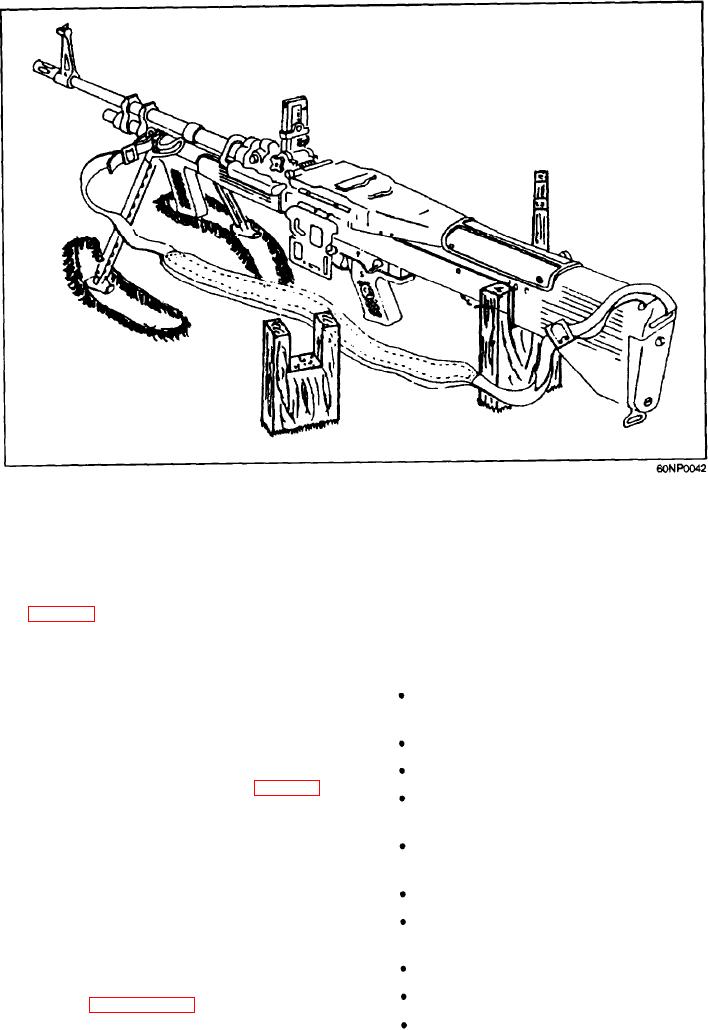
Figure 4-27.--Forked stake method.
COMPANY FIRE PLAN
are dug under the feet of the bipod to rotate in. If the
feet of the bipod move about freely without being
All the platoon commanders submitted their fire
contained in these pits, the accuracy of the fire will be
plans to the company CP. The company CP compiles
reduced (fig. 4-27).
the information and prepares a company fire plan.
4. Notched Log under Receiver: This method
Items that must be included on the company fire plan
works similar in principle to the fork method. Instead
include the following:
of having notched stakes for each target, a log is
Each primary and secondary position of the
substituted under the receiver with notches cut to the
platoon
correct depth and in the correct spot for direction. The
Each sector of fire of the platoon
biggest drawback here is the limited depth of target you
can engage; however, if the ground is level and
Position and PDF for each automatic rifle
uniformly sloped, this may not be a factor (fig. 4-28).
Location of the platoon or the company
5. Aiming Stakes and Tape: This method is
observation post
unique because it is the only method that does not
Location of the platoon or the company listening
restrict the free movement of the gun. Although it is
post
more accurate than most others, it also consumes the
Location of the forward observer (FO)
most time and requires the use of some material that will
not always be available. To use this method, you must
FPLs of all weapons located in each defense area
of the platoon
mount the gun on a tripod and have the T and E
mechanism in place. To implement this method, you
On-call targets
will need luminous tape and one stake for each target
Barriers and early warning devices
and each sector. Figures 4-29 and 4-30 show this
Claymore mines
method with an M19.

